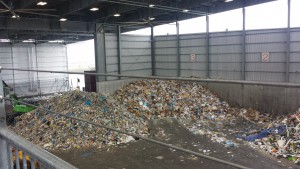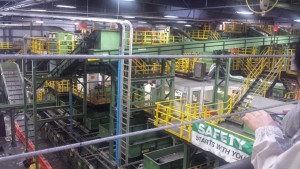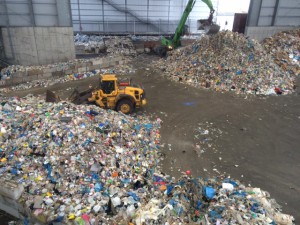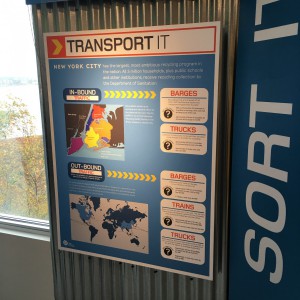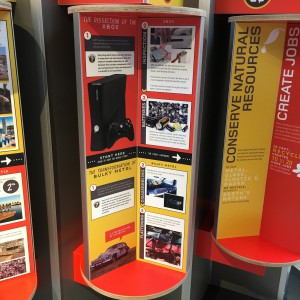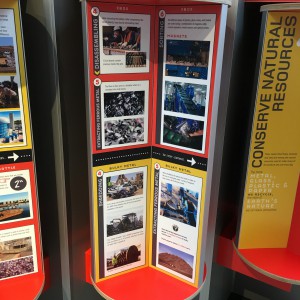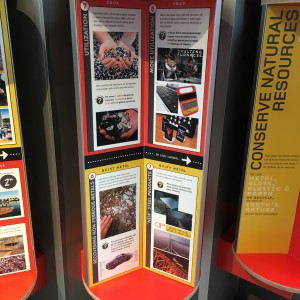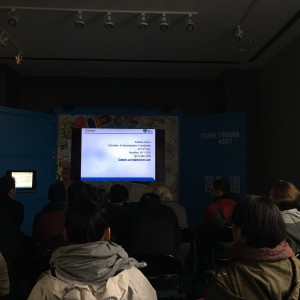Facility Management at Sims Municipal Recycling
Sims Municipal Recycling is a division of an Australian based parent company, Sims Metal Management. It officially commenced operation in 2013 with a $110 million material recycling plant in Brooklyn as a joint venture between Sims municipal recycling and New York City department of sanitation serving as the principal processing facility for the recycling of metals, glass, paper and plastics.
The facility has the capacity to process 1000 tons of recycled materials a day, which are shipped to markets around the world.
The coordination of sustainable and carbon footprints reduction elements, processes and technologies to support core business development and delivery of its products and services while optimizing environmental performance has been the central idea in its business model.
Some of the sustainable and environmental footprints reduction strategies utilized by the company that should be emulated are as follows:
- Its buildings are made of 99% recycled American made steel and recycled glass.
- Creation of new marine habitat.
- On-site storm water management.
- 600kW solar power installation and a 100kW wind turbine (renewable energy generation).
- Utilizing barges and freight rails for transportation thus decreasing traffic congestion, fuel consumption and vehicles emissions.
As a result of its business model, 30% of the city’s waste has been diverted from various landfills. The recycling facility has also created 80 to 85 permanent jobs with the prospect of growth.
SIMS Municipal Recycling CenterOn
Sabin Visan
ECON 2505
11/18/2015
Sunset Park Recycling Center
On a rainy Wednesday back in October we took a class field trip that would change my outlook on the world around me. Before coming to the plant I was aware of there being recycling as I always make sure I separate everything, but i did not know the process of recycling. The newly built SIMS Municipal Recycling Center is located in Sunset Park right on the riverfront, which is great as most of the waste arrives on barges to save both money and the environment by using less polluting trucks. However, not all of New York City’s recycle comes in on the barges, Brooklyn’s recycle still comes in by trucks, which is very inefficient way to transport. When the garbage arrives the barges are placed inside a large covered dock which has a giant opening to the building where the unprocessed recycle is held. Inside the building there’s a giant crane which unloads the barges. Then a bulldozer pushes the waste onto conveyor belts to start the process. The recycling center can handle up to 1000 tonnes of recycle a day. Once the waste is on the conveyor, it goes through different machines that cut open the bags, attract metals and other processes to sort the materials. Then the sorted materials gets compressed into cubes and are ready to ship out to buyers around the world. However, not all the garbage gets recycled the plastic bags that waste comes in with, cannot be recycled therefore its collected and sent to the local dump. This facility is an enormous help to the environment as it helps lessen our environmental footprint on the world. Even though it was rainy the trip was very eye opening, as the class discovered the inner working of the facility.
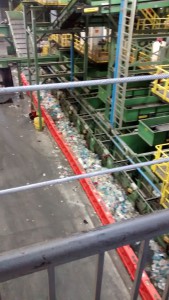
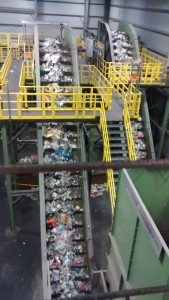
SIMS Municipal Recycling trip
Allyson Lau
Environmental Economics
Fall Semester
SIMS Recycling Facility
Growing up living in Brooklyn along the neighborhoods of Sunset Park and Bay Ridge I never knew the 30th Street Pier in the South Brooklyn Marine Terminal even existed. In December of 2013, this pier eventually became the location for a new recycling facility operated by Sims Municipal Recycling. Before attending the trip to Sims Municipal Recycling, I only thought the facility would provide us with information on recycling and reusing recyclable garbage to produce new products. However, after visiting the Sims recycling facility I have learned that there is so much more beyond recycling and reusing. The tour provided the class with interesting information as we were guided through observation decks and into the mazes of hallways and staircases between machines. Students got a sense of how intricate and efficiently consolidated the space was. Recyclable materials were traveling vertically, horizontally, back and forth between different sensors and sorters before they ended up neatly packed in cubes.
The Sims facility is responsible for sorting out metal, glass, plastics and many other miscellaneous wastes collected in New York City. It has a capacity to process 1,000 tons of material a day that is eventually sold to customers all around the world. An interesting fact I learned while visiting the recycling facility was that, 50% of New York City’s paper isn’t processed through Sims machinery but instead, the paper waste gets distributed throughout other companies. There are even conveyor belts that sort through plastic bags by opening them to make sure each waste is separated and then individualized into a compressing machine.
Its facility is built and designed using sustainable practices to minimize environmental impact. For example, a large amount of the city’s recyclables travel to the recycling center through waterways to reduce pollution and traffic. According to nycedc.com, that “displaces 150,000 annual truck trips and thereby having a positive impact on street congestion.” One of their main ideas for creating this facility is to import and export materials mostly by barge. Because of its location, the city utilizes maritime transportation to bring large portions of the recyclables to the facility. Of course there is truck access, as well as rail siding but over 850ft of dock is for material coming in and material going out.
Maritime transportation is a sustainable and cost effective way to move freight. Sims recycling facility utilizes New York’s waterways daily, as opposed to vehicles traveling on city roads, which benefits on infrastructure maintenance, fuel consumption, congestion, and vehicle emissions. While discussing the topic of sustainability, the facility was also built to embrace marine life. The city specifically constructed three reefs off the west end of the pier that provide new habitat for marine life. In addition, the Sims recycling facility incorporates many sustainable building features such as being raised 4 feet higher in order to keep it from being damaged by sea level rising and storm surges. Although it was a terribly windy and rainy day to visit the SIMS recycling facility, it was definitely worth it to know how our wastes are being disposed daily.
Trip: SIMS Recycling Facility
Lichi Zhu
11/18/2015
We recently spent the day in the Sunset Park neighborhood of Brooklyn to take a look at the newly opened Sims Municipal Recycling facility that focuses on material recovery. The Sunset Park Material Recovery Facility is a processing center for New York City’s curbside metal, glass, and plastic recyclables which is being undertaken by Sims Municipal Recycling and the City of New York. Before I go to Sims Municipal Recycling, I have no idea about how government manage life garbage. After this trip, I know that materials are received from City collection vehicles at Sims Metal Management facilities and then moved between facilities by barge to minimize truck traffic and air pollution within the City. The materials are sorted by commodity type, packaged and shipped to manufacturers as raw material for new products. The facility’s design was influenced by the neighborhood’s industrial vocabulary, as well as its programmatic use as a recycling center which inspired reuse throughout. Just one step in the recycling process, this facility sorts recyclable materials from all five boroughs of New York City. The facility—which itself is made almost entirely of recycled steel—uses the most state-of-the-art technology to process the bulk of the almost 900 tons of material delivered there per day. We got some valuable insights into how that giant load of stuff is sorted and prepared to become future products. One of the secrets: high-tech cameras that scan every single object on the conveyor belt. It can separate each object as faster as possible in order to sort out the plastic, glass and metal from the garbage in the facility. These recyclables things are sold to many different companies and produces other new products. This is a very helpful system for Sustainable Development because the quality of urban living has been damaged by excessive consumer waste.
Reading for Wed. Nov. 18
Assigned reading for Wed. Nov. 18 in-class project: Please read the attached short article on the “Big U.” We will begin with a discussion of the economic impact of “green” projects, followed by the in-class project on the”Big U.”
Sims Field Trip – Cathy B’s. post
- Sims post by Cathy
Cathy’s visit to Sims Recycle
Research project description
Please see instructions and guidelines posted under ‘Research Project Description – class assignments.’ Guidelines for preliminary research summary were distributed in class on Wed. Nov. 4; this is due on Wed. Nov. 18th.
Reading assignment for Nov. 4
Just a reminder if you did not see the reading posted (under Reading Assignments – Nov. 4), to please take a look before tomorrow’s class. This is a short article that our guest lecturer will be discussing in conjunction with her lecture on Sustainable Tourism. I have also included a link to it here just in case.
SIMS Municipal Recycling trip
After visiting the SIMS Municipal Recycling facility, I had learned a lot about recycling. This facility focuses more on sorting out recycling waste and making a profit out of these reusable rather than producing goods out of these waste. According to the Eadaoin, our tour guide she stated that all of the household and public school’s garbage in Brooklyn, and Manhattan all goes to SIMS facility. This trip to SIMS amazed me by seeing the amount of garbage and the machinery they use to sort out these garbage. After sorting out the garbage in the facility to plastic, glass and metal, these recyclables are sold to many different companies. These companies would then use these recyclables, reuse, and produces new goods out of them. 